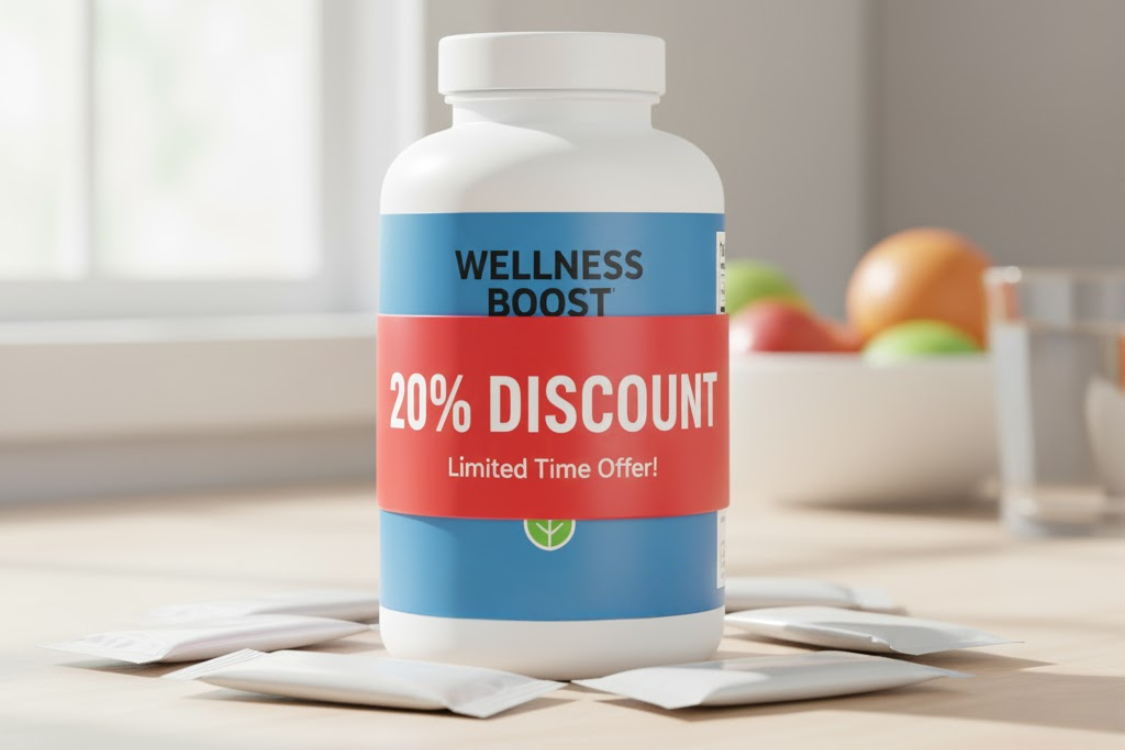When used strategically, supplement manufacturing volume discounts can help businesses achieve sustainable growth and manage inventory more effectively across multiple SKUs (stock keeping units). Buying supplements in bulk can certainly lower unit costs, but not every discount guarantees real savings. A lower price per unit may also come with higher storage expenses, longer cash cycles, or hidden fees that affect your bottom line.
A smart approach is to evaluate volume tiers, ingredient sourcing, and pricing structures with full transparency. Careful review helps maintain consistent product specifications, supports informed budgeting, and ensures cost efficiency without implying product performance or consumer outcomes.
Why Volume Discounts Matter in Supplement Manufacturing
Volume discounts are a standard practice in the supplement industry, helping supplement brands and manufacturers plan production around predictable orders. When designed strategically, these pricing strategies can motivate brand owners to place larger purchases that improve production costs, strengthen supply chain efficiency, and protect profit margins. According to Mohammed (2020), the key purpose of supplement manufacturing volume discounts is to encourage additional profitable sales, not to reward large customers for orders they would have placed regardless.
Boosting Your Profit Margins
Well-structured volume discounts can widen profit margins by lowering per-unit pricing while maintaining product standards. When pricing decisions align with customer purchasing behavior, supplement brands can create opportunities for cost savings and revenue growth. Instead of offering price reductions that shrink margins, focus on tiered pricing models that lead to measurable cost efficiency and improved pricing structure over time.
Supporting Business Growth
In supplement manufacturing, volume discounts can support consistent scaling by freeing up funds for bulk orders, packaging, or logistics. Properly managed bulk purchases can reduce operational expenses, stabilize production, and allow brands to expand their customer base without overextending resources. When structured well, volume discount programs help supplement brands grow sustainably while managing inventory efficiently across multiple SKUs (stock keeping units).
Encouraging Long-Term Partnerships
Consistent, fair discount agreements foster lasting relationships between manufacturers and supplement brands. Reliable pricing strategies and transparent discounted rates strengthen trust and simplify negotiations. When each client’s order size and production costs are accurately evaluated, manufacturers can maintain competitive pricing while supporting quality supplements that meet consumer expectations across every production tier.

How Supplement Manufacturing Volume Discounts Work
Supplement manufacturing agreements vary. Clear documentation of the pricing structure is necessary to avoid misunderstandings. The following figures are examples for illustration only.
Understanding Price Tiers
In some agreements that use tiered pricing, an order of 1,000 units could be quoted at a higher unit price than 5,000 or 10,000 units. These numbers are hypothetical examples to show how tiers are sometimes presented, not market averages or guarantees.
Why Manufacturers Offer Discounts
Larger, predictable runs can lower certain operational expenses and reduce changeover time. Purchasing raw materials in bigger lots may qualify for wholesale pricing from upstream suppliers. These are common logistical considerations, not assurances of specific price reductions in every contract.
Where the True Cost Savings Come From
Potential savings can involve fewer setups, consolidated freight, or less idle time. Any reduced shipping or reduced cost should be confirmed with quotes and schedules. Treat these as variables that depend on lanes, carriers, and timing.
Questions to Ask About Volume Discounts
Aligned expectations help prevent disputes. Consider asking:
- What is your minimum order quantity, or MOQ?
- At what order size do price breaks begin?
- Are discounts applied per SKU or based on total combined volume?
- How often can tiers be reviewed or renegotiated?
- Are quoted discounts specific to a single batch, or can they extend to future orders?

Red Flags in Volume Discount Agreements
Some discount structures can hide risks that do not show up in the unit price. Aggressive pricing can push changes that raise hidden quality costs, like rework, returns, or complaints, which can strain cash flow and consistency. Studies on hidden quality costs note that poor tracking and disclosure can harm sales and market share, so brands should evaluate discounts with full-cost visibility in mind (Hameed, Al-Abedi, & Abass, 2019).
Deep Discounts Tied to Unrealistic MOQs
If a quote requires quantities beyond your storage, cash flow, or forecast, the low unit price may not reflect the total cost. Validate your inventory management plan and sales assumptions before committing. Confirm that minimums will not lock up capital or create excess stock.
Discounts That Compromise Quality
If a lower price hinges on changing raw materials, testing frequency, or specifications, document the change clearly. Treat any adjustment as a manufacturing decision that carries measurable risk, not as neutral to outcomes without evidence. Keep records that show how specifications and audits will be maintained at each volume tier.
Hidden Costs Canceling Out Savings
Line-item shipping, storage, rush fees, and chargebacks can erase a price reduction. Ask for a written, landed-cost breakdown, then compare quotes on the same terms. Review service levels and lead times carefully to ensure discounts reflect true savings rather than hidden logistics or quality costs.
How to Negotiate Better Volume Discounts
Negotiating pricing in the supplement industry is a business process. Aim for terms that balance a fair discounted price with clear service levels and stable supply. When you set discount periods, remember that research on buyer–supplier contracts finds that longer contracts can support process improvements and learning, yet very long terms may weaken incentives to improve, so negotiate duration and review points with care (Liem, Khuong, & Canh, 2020).
Use Competitive Quotes as Leverage
Compare written quotes for the same specs. Share only what your confidentiality terms allow and document the scope, testing, and lead times. This keeps decisions grounded in verifiable details.
Negotiate Staggered Discounts
Phase your discounts as volume grows. Tie each tier to actual demand and delivery performance. Staggering protects cash flow and avoids overproduction.
Bundle Multiple SKUs
Combine SKUs under one agreement to simplify planning. Confirm how bundling affects changeovers, packaging schedules, and shipping windows. Keep volume forecasts realistic.
Lock In Discounts for Future Orders
If pricing works, secure a fixed period with a defined review date. Spell out any standard pricing resets, surcharges, or freight terms in writing. Align the length of the discount period with measurable quality and delivery checkpoints.
Checklist for Getting Fair Volume Discounts
Consider whether these savings apply to bulk supplement orders or specific SKUs to prevent confusion during audits or scale-up planning.
- A written tiered pricing table, such as 1k, 5k, 10k, with clear effective dates
- Clear terms for per-SKU versus total-volume calculations
- Documented specifications and testing at all volumes
- Full cost breakdown, including freight, storage, and payment terms
- A process for future reviews as the brand scales

How to Scale Without Overcommitting
Scaling in supplement manufacturing is an operational and financial strategy, not a measure of product performance or consumer benefit. The goal is to match production capacity with verified demand while keeping quality standards consistent. A gradual, data-informed approach helps businesses expand responsibly without unnecessary risk or overextension.
Start With Smaller Runs to Validate Demand
Beginning with smaller runs allows you to monitor sales trends and adjust your next bulk orders based on real data. This approach reduces the risk of unsold inventory and keeps cash flow stable. Use clear metrics like order frequency or customer feedback to guide future pricing decisions and production levels.
Use Staggered Production or Split Shipments
Breaking production into stages or using split shipments can lower upfront costs and improve flexibility. This structure helps manage operational expenses and minimizes warehouse strain during high-demand periods. Always confirm freight terms and associated charges to avoid unexpected increases in total cost.
Maintain a Backup Plan
Establishing a secondary manufacturer or supplier protects your brand from disruptions in the supply chain. Vet all partners for quality documentation and alignment with your established specifications. Having contingency options in place supports continuity without compromising production timelines.
Smarter Volume Discounts Build Stronger Supplement Brands
Supplement manufacturing volume discounts can strengthen long-term profitability when managed with precision and transparency. Evaluating true costs beyond the unit price, such as storage, freight, and cash flow impact, helps determine whether a discount truly improves margins or adds hidden expenses.
Well-defined pricing tiers, realistic minimum order quantities, and clear documentation allow supplement brands to achieve predictable cost savings while maintaining consistent product standards. Strategic negotiations that rely on verified quotes and written review terms help both manufacturers and brands sustain fair pricing and dependable quality control.
Successful supplement businesses view volume discounts as one part of a broader operational strategy. When applied carefully, these programs can balance growth, supply stability, and cost efficiency while supporting responsible scaling and long-term profitability.
Frequently Asked Questions
What are supplement manufacturing volume discounts?
Commercial price reductions that may be offered when brand owners place larger purchases under defined terms.
How much can I save with volume discounts?
Savings, if any, vary by contract, specifications, and timing. Request written quotes for your case.
Do volume discounts apply to each product or across all SKUs?
Policies differ. Ask whether the volume discount is calculated per SKU or across combined volume.
What are the risks of overordering supplements for a discount?
Excess stock can raise storage and carrying costs. Validate demand and cash flow before committing.
How can I negotiate supplement manufacturing volume discounts effectively?
Define specifications, compare written quotes, and confirm total landed cost, including shipping costs and payment terms.
References
- Hameed, M. K., Al-Abedi, T. K., & Abass, Z. K. (2019). The effect of hidden quality cost on supply chain management of sales and market share. International Journal of Supply Chain Management, 8(1), 526–533.
- Liem, N. T., Khuong, N. V., & Canh, N. T. (2020). Buyer–supplier contract length and the innovation of supplier firms. Journal of Open Innovation: Technology, Market, and Complexity, 6(3), 52. https://doi.org/10.3390/joitmc6030052
- Mohammed, R. (2020, October 8). What B2B companies get wrong about volume discounts. Harvard Business Review. https://hbr.org/2020/10/what-b2b-companies-get-wrong-about-volume-discounts





